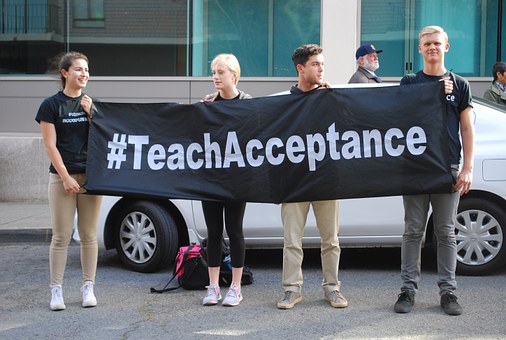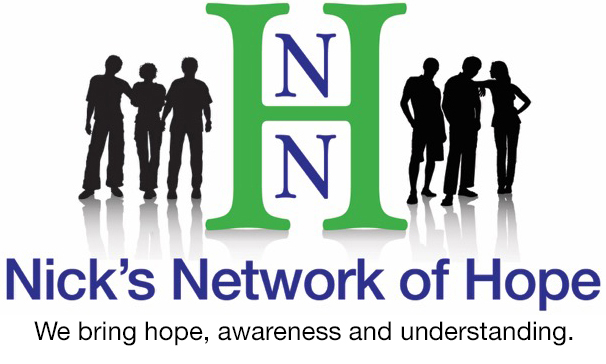Results of National Youth Risk Behavior Survey
*The 2021 National Youth Risk Behavior Surveillance System (YRBSS) results will be available in the spring of 2023. Below are the results of the last survey done in 2019.
The Centers for Disease Control and Prevention (CDC) released their results of an anonymous survey conducted in 2019, called the National Youth Risk Behavior Survey (YRBS). Below is the Human Rights Campaign Foundation (HRC Foundation) analysis of this data, which breaks the results down into easy to understand terms. Their findings are based on approximately 180,000 student surveys, which included sexual orientation and gender identity data available for analysis from a combined state dataset:
LGBTQ teens face ridicule and violence within schools across the U.S., impacting their attendance and academic performance.
- 31% if LGBTQ youth, 43% if transgender youth, and 40% of questioning youth have been bullied in school—compared to 16% of their non-LGBTQ peers.
- 17% of LGBTQ youth, 29% if transgender youth, and 30% of questioning youth have been threatened or injured with a weapon at school—compared to 6% of non-LGBTQ youth.
- 24% of LGBTQ youth , 35% if transgender youth, and 41% of questioning youth have skipped school because they felt the school or on the way to school was an unsafe environment—compared to 8% of their non-LGBTQ peers.
- 78% of non-LGBTQ youth mostly earn A’s and B’s—compared to 65% of LGBTQ youth, 55% of transgender youth, 63% if LGBTQ youth of color, and 63% of questioning youth.
LGBTQ teens suffer mental health issues at a higher rate than their non-LGBTQ peers.
- More than half of LGBTQ youth (54%), 61% of transgender youth, and 61% of questioning youth are battling symptoms of depression—compared to 29% of non-LGBTQ youth.
- 35% of LGBTQ youth, 45% of transgender youth, and 40% of questioning youth have seriously considered attempting suicide— compared to 13% on non-LGBTQ youth.
- 31% of LGBTQ youth, 43% of transgender youth, and 42% of questioning youth have made plans about how they would attempt suicide—compared to 10% of their non-LGBTQ peers.
- 22% of LGBTQ youth, 29% of transgender youth, 32% of questioning youth, and 27% of LGBTQ youth of color have attempted suicide—compared to 5% of non-LGBTQ youth.
LGBTQ teens, especially transgender youth and LGBTQ youth of color experience housing instability at rates significantly greater than their non-LGBTQ peers.
- 16% of LGBTQ youth, 22% if transgender youth, and 17% of LGBTQ youth of color are usually sleeping somewhere that is not the home of a parent or guardian—compared to 3% of non-LGBTQ youth.
- 76% of non-LGBTQ youth in stable housing and who get 8 or more hours of sleep earn mostly A’s and B’s. 44% of LGBTQ youth earn A’s and B’s when they experience housing instability and sleep deprivation.1
Click Here for the CDC’s Summary of all the Data from the 2019 YRBS study.
______________________________________________________
Results of the 2019 SAMHSA’s National Survey on Drug Use and Health: Lesbian, Gay, and Bisexual (LGB) Adults
In 2019, SAMHSA’s (Substance Abuse and Mental Health Service Administration) National Survey on Drug Use and Health focused on patterns of substance use and mental illness among adults (age 18 and older) of different sexual orientations. Below is a summary of some of the results for LGB adults 18 yrs or older.
Mental Illness and Substance Use Disorders- for those struggling with a substance use disorder, 1 in 2 struggled with illicit drugs, 3 in 5 struggled with alcohol use, and 1 in 6 struggled with both.
Mental Illness- 2 in 5 had a serious mental illness
Alcohol use disorder- 12% (546K) ages 18-25 and 11.8% (1.2M) for ages 26 or older.
Opioid Misuse- 8.5% (389K) ages 18-25, and 10.1% (989K) ages 26 or older
Serious mental illness among the LGB population ages 18-25 and 26-49 significantly increased since 2016. Major depressive episodes with severe impairment among LGB males (age 18-25) significantly increased compared to 2016. Same for women in this age group compared to 2018 statistics. Having a substance use disorder significantly increased suicide thoughts, plans, and attempts for LGB age 18 yrs or older (20% more had thoughts, 6.9% more had made a plan, and 5.4% more had attempted).2

If you are part of the LGBTQ community, you are not alone. Even though you may sometimes face fear, hatred, and prejudice in school, with friends, in the community, and even possibly in your own homes, you must never lose hope. Do not let the actions of the unaccepting take the joy out of your life. Some excellent organizations are available to you that can provide support and links to services. Our Resources page will direct you to some of these organizations, as well as to a 24/7 Crisis Lifeline, Chatlines, Text Line and Youth Talk-Line.
- Project Thrive- A National Campaign to Support LGBTQ Youth/ Human Rights Campaign Foundation. LGBTQ Youth Are Living in Crisis: Key Findings From HRC Foundation Analysis of CDC Data
- 2019 National Survey on Drug Use and Health: Lesbian, Gay, and Bisexual (LGB) Adults by the Substance Abuse and Mental Health Services Administration (SAMHSA), U.S. Department of Health and Human Services. Available at https:www.samhsa.gov/data/sites/default/files/reports/rpt31104/2109NSDUH-LGB/LGB%202019%20NSDUH.pdf. Accessed on April 17, 2021

